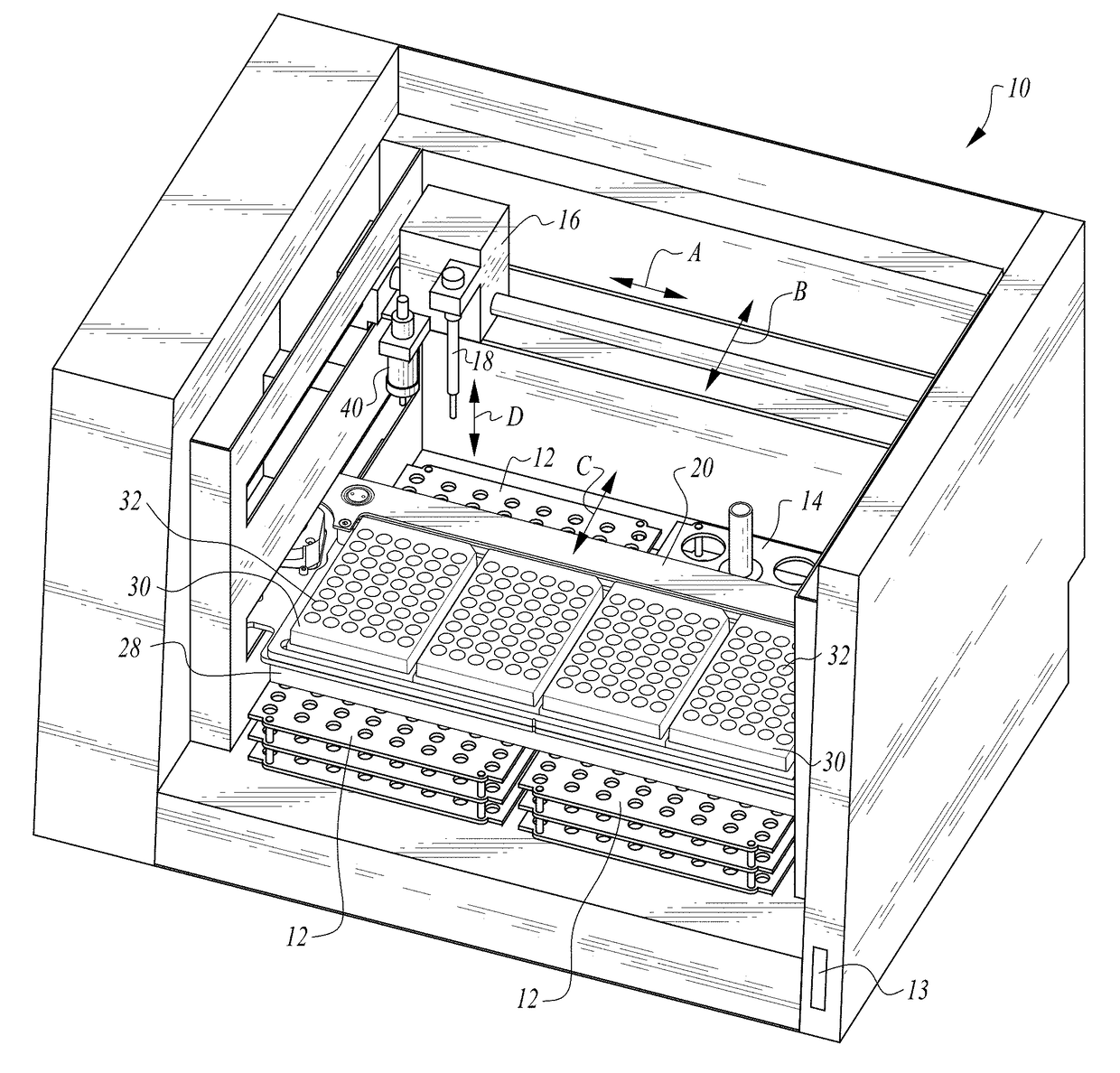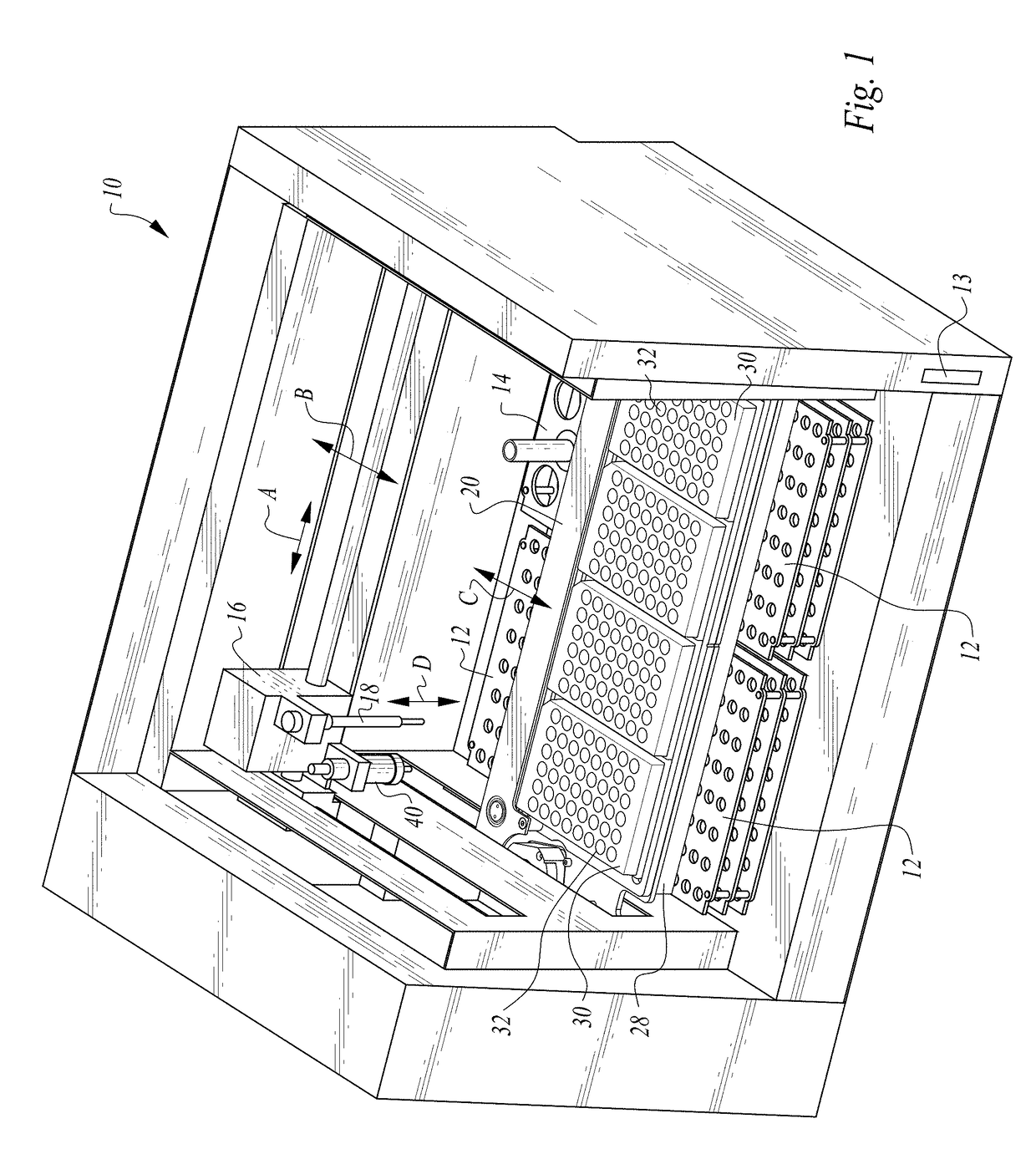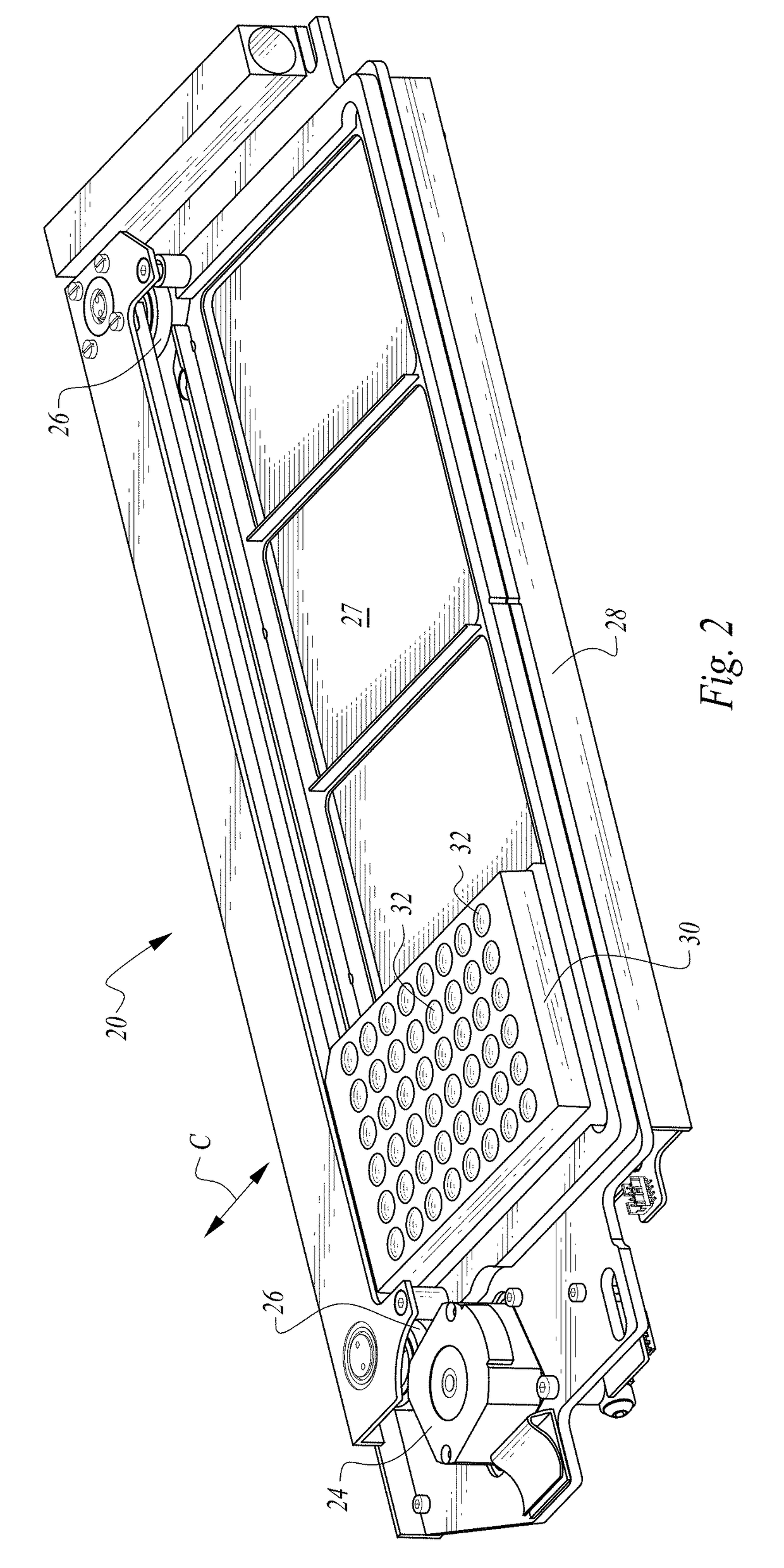Process and machine for automated agglutination assays with image automated evaluation
a technology of automated agglutination and automated evaluation, applied in the field of automated processes for performing automated agglutination assays with image automated evaluation, can solve the problems of significantly time-consuming test, less reliable, and requiring significant amount of time expenditure by well-trained practitioners, and achieve the effect of maximizing efficacy
- Summary
- Abstract
- Description
- Claims
- Application Information
AI Technical Summary
Benefits of technology
Problems solved by technology
Method used
Image
Examples
example 1
[0109]In one embodiment, the decision tree algorithm for determining the reactive and non-reactive nature of the sample image was generated using the Accord C45 learning algorithm provided by accord-framework.net available as open source code available on GitHub. A large number of sample images having a known reactive or non-reactive status were analyzed for the twelve parameters listed above and the Accord C45 learning algorithm was also programmed with the known results associated with each of the images. The Accord C45 learning algorithm then generated a decision tree algorithm which was used to determine the reactive or non-reactive nature of other images presented according to the process of this invention. The Accord C45 learning algorithm was thus effectively trained how to call reactive images and non-reactive images from these twelve parameters.
example 2
[0110]FIGS. 27 and 28 depict a sample image (upper portion of FIG. 27) histogram of related data from the process described above (lower portion of FIG. 27), the sample image with overlaid image processing lines superimposed thereupon, and values for the twelve parameters evaluated by the process of this invention. In the histogram, the Ring Ray CV values are depicted in red, the Ring Ray Delta CV values are depicted in green and the Border Ray Delta CV values are depicted in blue. Lines overlaid on the sample image (FIG. 28) include a red line for the curve fitted to the contrasting media in the sample, and with radial lines perpendicular to the fitted curve shown in yellow, and with the border radial lines shown in green. The results in this example was a finding that the sample was reactive.
example 3
[0111]FIGS. 29 and 30 depict a further sample image (upper portion of FIG. 29) featuring a high degree of dumpiness. In this example similar colors are used for similar data in the histogram (lower portion of FIG. 29) and for the processed image and for the twelve parameters evaluated. The result of the evaluation for this sample was reactive.
PUM
 Login to View More
Login to View More Abstract
Description
Claims
Application Information
 Login to View More
Login to View More - R&D
- Intellectual Property
- Life Sciences
- Materials
- Tech Scout
- Unparalleled Data Quality
- Higher Quality Content
- 60% Fewer Hallucinations
Browse by: Latest US Patents, China's latest patents, Technical Efficacy Thesaurus, Application Domain, Technology Topic, Popular Technical Reports.
© 2025 PatSnap. All rights reserved.Legal|Privacy policy|Modern Slavery Act Transparency Statement|Sitemap|About US| Contact US: help@patsnap.com



